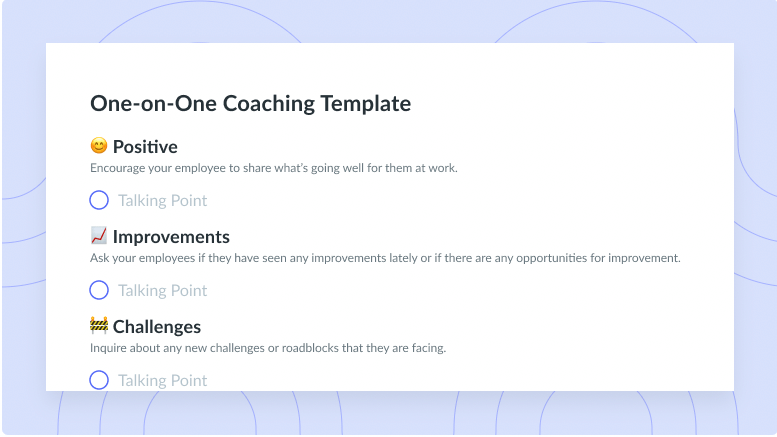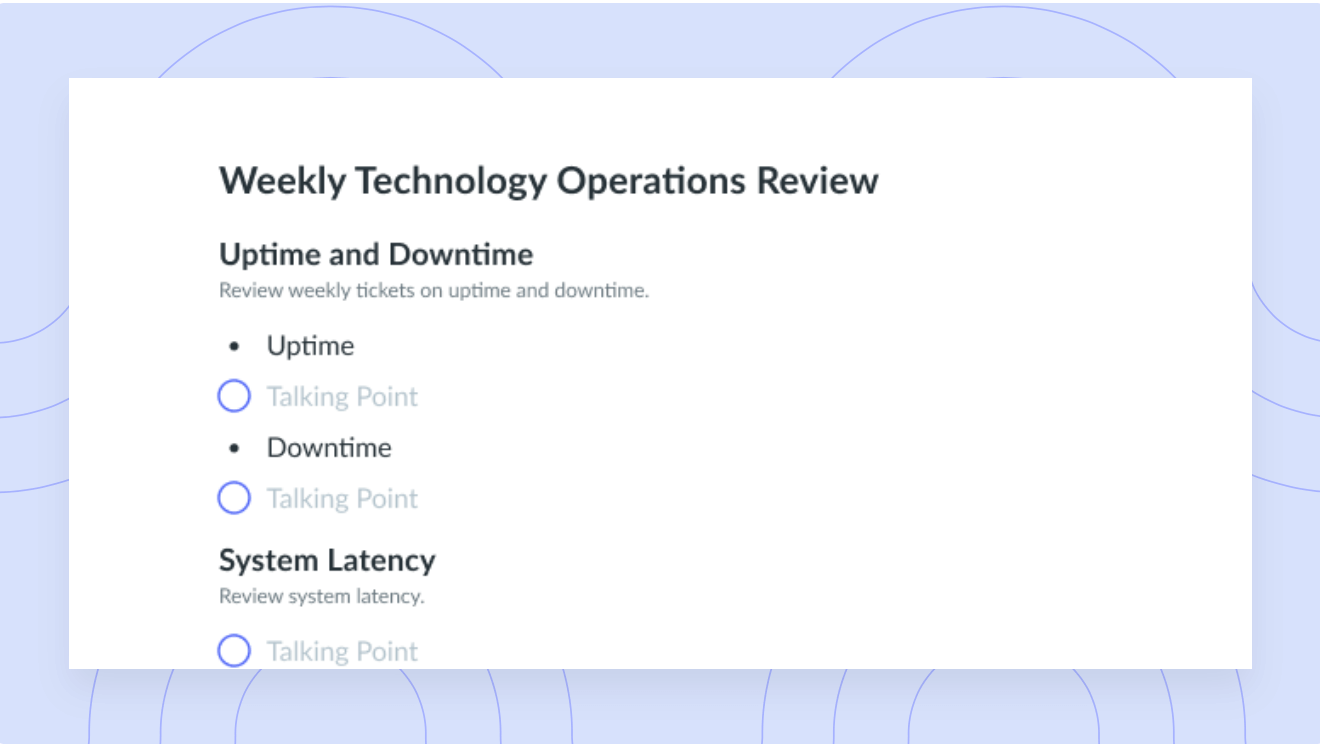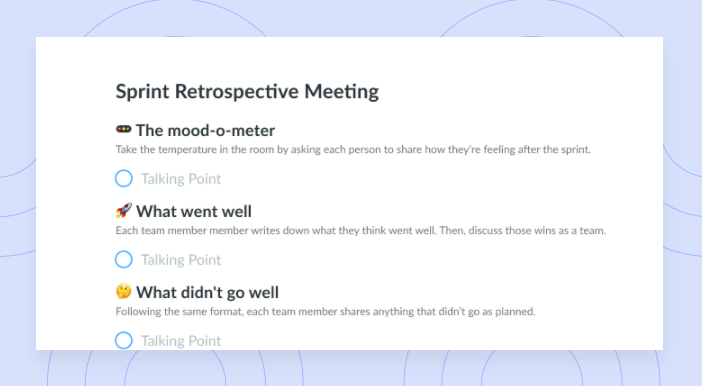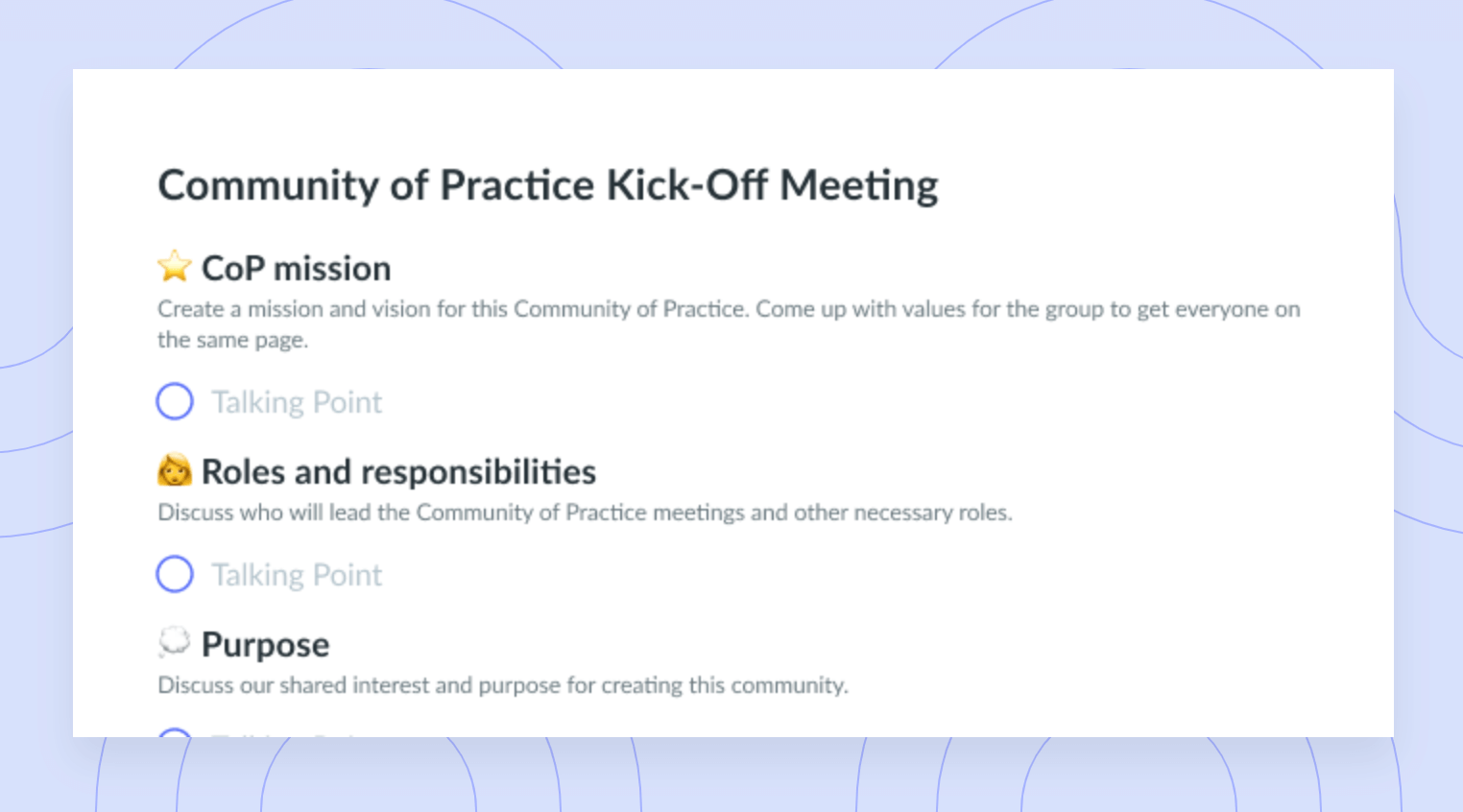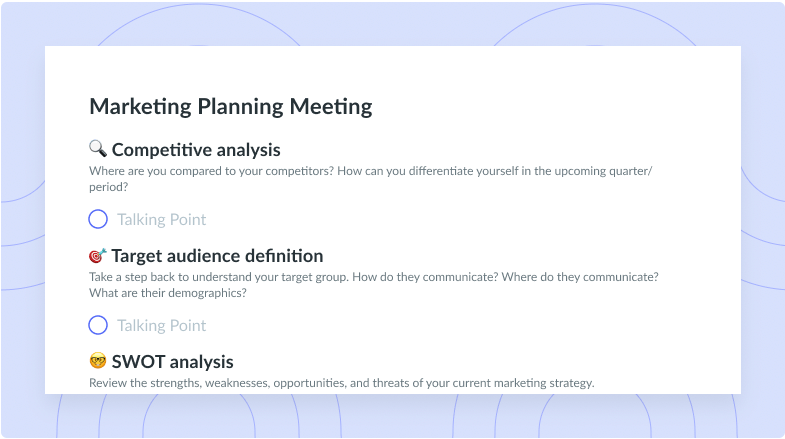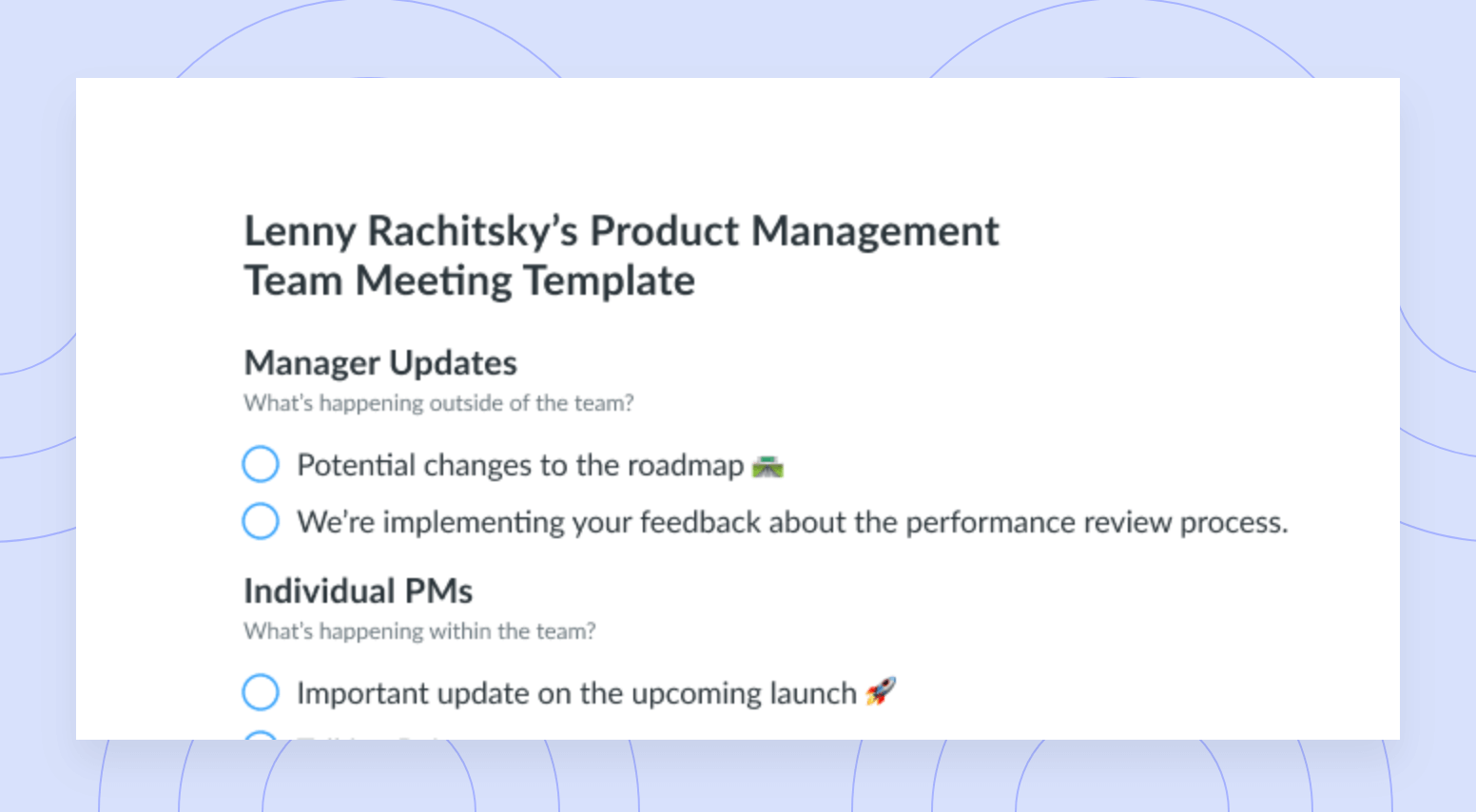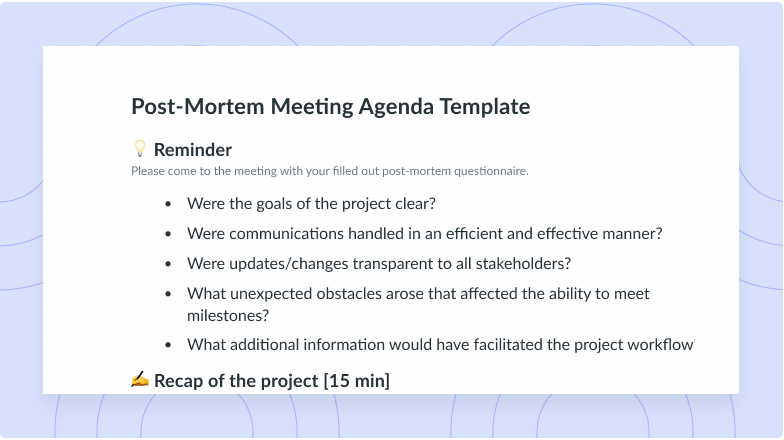
Quarterly OKR Goal-Setting Template
Get this templateUse this template to set actionable and measurable objectives and key results (OKRs) with your direct reports.


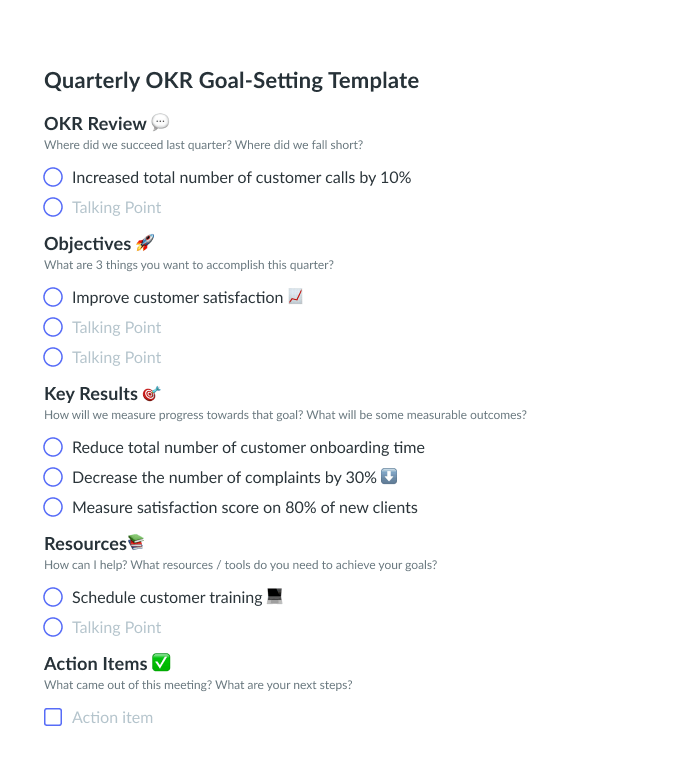

The quarter is coming to an end, and as a manager, you know it can only mean two things: It’s time to evaluate the goals that your teammates set up 90 days ago, and it’s also time to set goals for the upcoming 90 days.
As a manager, you probably know that aligning individual goals with company objectives is crucial – yet complicated. To help you achieve this, we curated this OKR template that you can use to set goals with your direct reports.
This template is here to guide you and your direct reports into effectively setting OKRs that bring impactful results.
What’s inside this Quarterly OKR Goal-Setting Template:
1 OKR Review 💬
Start the OKR check-in by asking your team members questions such as where did we succeed last quarter? and Where did we fall short? That is a good start. By asking these, you are identifying wins to celebrate and aspects to be improved. However, the OKR grade system works somewhat differently.
OKRs are graded using a number on a scale of 0 to 1.0, where 1.0 means the objective was fully achieved. Start by grading each key result individually and then, get an average. Use this average to grade the objective. Keep in mind that OKRs are in essence ambitious, thus the “sweet spot” for an OKR grade is between 0.6 and 0.7. If your direct report is usually getting a grade of 1.0 that means their goals are not ambitious enough. If the grade fell well short, then try to revise expectations for the next quarter’s OKRs.
Here are three things you should consider. OKRs are public, they are not meant to be used as your employee performance evaluation, and lastly, it is recommended to check in throughout the quarter to have an idea of where everyone stands.
Some managers even found out that listing monthly projects for each key result and reviewing their progress during every weekly meeting worked better for fast-paced companies.
“Each quarter we can set out goals that we should be hitting in terms of improving our business through the OKRs. This keeps us focused on driving real business results and not just increasing the level of activity. Monthly projects allow us to hold ourselves accountable for our internal commitments and have a tight timeline for product development or marketing and business development activities.” – Dave Girouard, Founder and CEO at Upstart.
2 Objectives 🚀
As you already know, objectives represent what your team wants to accomplish. In a way, they set the direction that your business should go. Objectives are aspirational, and therefore they can make your team feel a little bit uncomfortable.
“Objectives are significant, they’re action-oriented, they are inspiring, and they’re a kind of vaccine against fuzzy thinking.” – John Doerr.
The challenging aspect of setting the right goals is carefully prioritizing what is more important and why you should focus on that. You can ask your direct report to come prepared with some objectives in mind and use this one-on-one meeting to carefully craft the appropriate objectives.
Here are some tips to set clear objectives with your direct reports:
– It is important to set three to five objectives. Limiting them helps you focus on what is really important.
– Use concrete and unambiguous terms to describe them. In the end, it should be clear if the objective was achieved or not.
– Objectives are “stretch goals”. Aim high but be careful not to set unattainable milestones that can demotivate your team.
– Avoid objectives that don’t add value. If met, objectives should make a remarkable difference in your business.
– Avoid expressions such as “keep doing”, “continue adding.”, “maintain sales”. These don’t set the field for new achievements.
3 Key Results 🎯
Again, Key Results are how you will accomplish the objectives you just set. They help you measure progress and success towards achieving that goal. For that reason, key results are aggressive and they must include hard numbers.
Here are some things you should have in mind:
– Develop three key results for each objective.
– Key results are measurable, specific and time-bound. You should be able to grade them using the scale we discussed above.
– Key results represent everything that needs to be done to achieve the objective.
– Key results should describe outcomes. They are not a to-do list of activities, but they describe the outcomes of these activities.
Because Key Results are measurable, if accomplished, they will directly contribute to the objective’s progress.
4 Resources📚
Implementing OKRs is a challenging and enriching process. But at first, it could be hard to get everyone on your team to adjust, or even enjoy, OKR goal-setting. On the bright side, one of the key elements of OKR is transparency, and it will help you get your team on board. As a manager, try to be clear about what OKRs are, how they will bring an impact both on the long and short terms, how OKRs are used and be open to answering any questions. These last two points are critical, your direct reports will feel so much more comfortable knowing how they will be graded, and consequently, they will be more committed to their goals.
You can also promote the use of individual OKRs to encourage personal development. You can give feedback to help your employees identify areas where they might need to improve or some skills they can perfect.
Use the free OKR goal-setting template in Fellow and be ready to see remarkable results!





